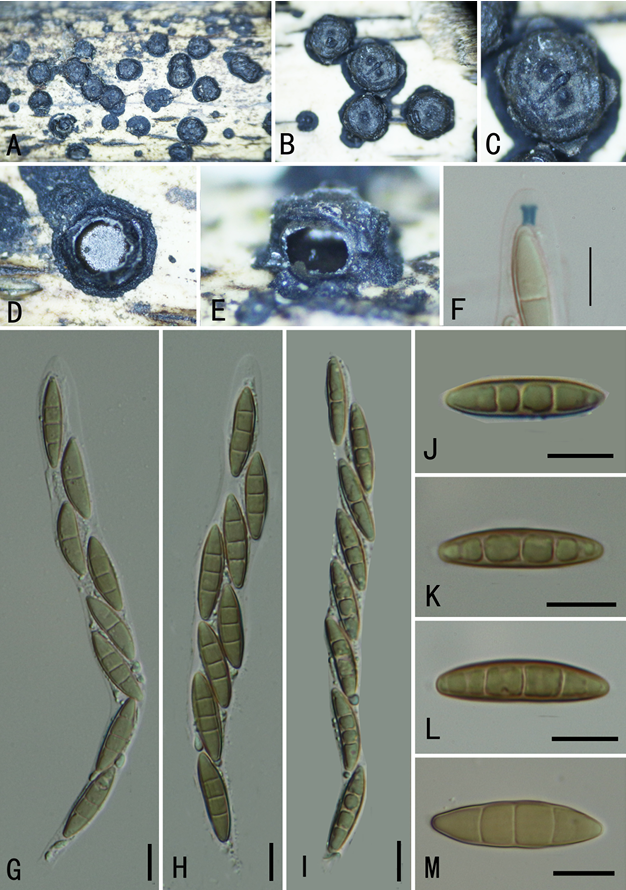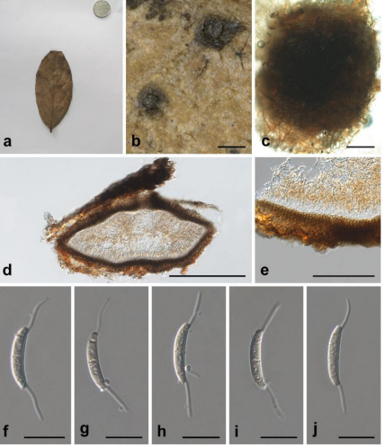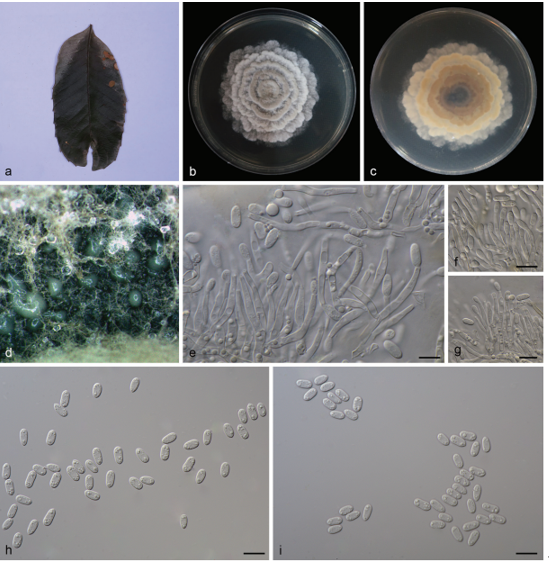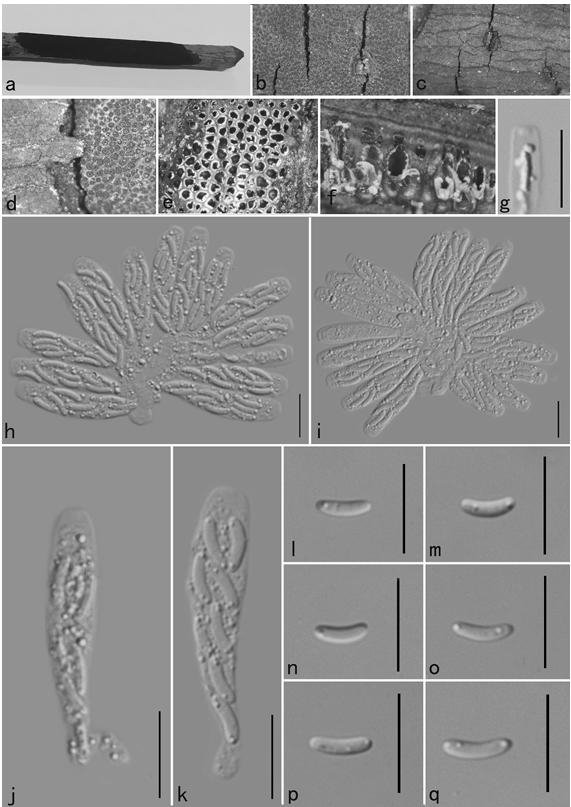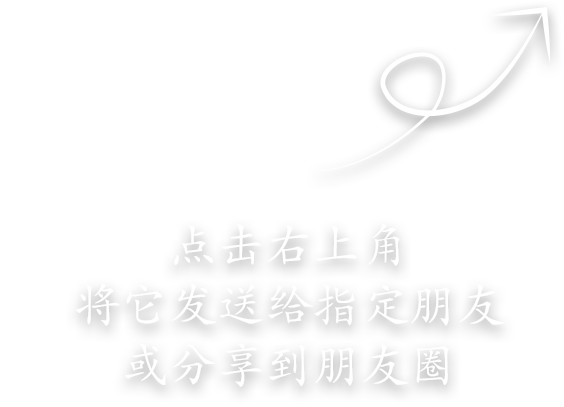Knufia separata L. Su, W. Sun and M.C. Xiang, sp. nov. 2020
MycoBank MB 810894
Holotype: China: Tibet: Naqu County, Qinghai-Tibet Plateau, 31◦060 N, 91◦420 E, 4762 m a.s.l., from gravel in alpine cold and hypoxia, dry climate, 7 August 2013, Meichun Xiang, (HMAS245361 (dried culture)–holotype and CGMCC 3.17337–ex-type culture).
Morphological description
Hyphae moniliform, branched, 2.6–6.9-µm-diam. (x = 4.8 µm, n = 20), hyaline to pale brown, smooth or verruculose, consisting of broadly ellipsoidal to cylindrical cells, apically and laterally budding cells forming dense and dark aggregates (Figure 11C–E). Swollen cells globose to sub-globose, 6.0–16.8-µm-diam. (x = 13.6 µm, n = 10) (Figure 11F,G). Multicellular bodies globose, ellipsoidal, or irregular, dark brown, 7.4–12.3 × 6.2–11.2 µm (x = 9.7 × 8.4 µm, n = 10), intercalary multicellular bodies developing the hyphae (Figure 11H–J).Culture characteristics: Colonies on MEA growing slowly, attaining 3-mm-diam. after four weeks at 25 ◦C, blackish-brown to olivaceous black, with a velvety, aerial short hyphae, regular margin, black in reverse (Figure 11A,B). Minimum 4 ◦C, optimum at 20–25 ◦C, and maximum 29 ◦C. Distribution: Naqu County (Tibet China).
Habitat: from gravel in alpine cold and hypoxia
Distribution: China
GenBank Accession:
Notes: The difference between K. separata and K. karalitana is the growth rate on MEA, with the latter growing faster (8 mm in three weeks) than the former (3 mm in four weeks) [11].
Reference: Wei Sun , Lei Su , Shun Yang et al.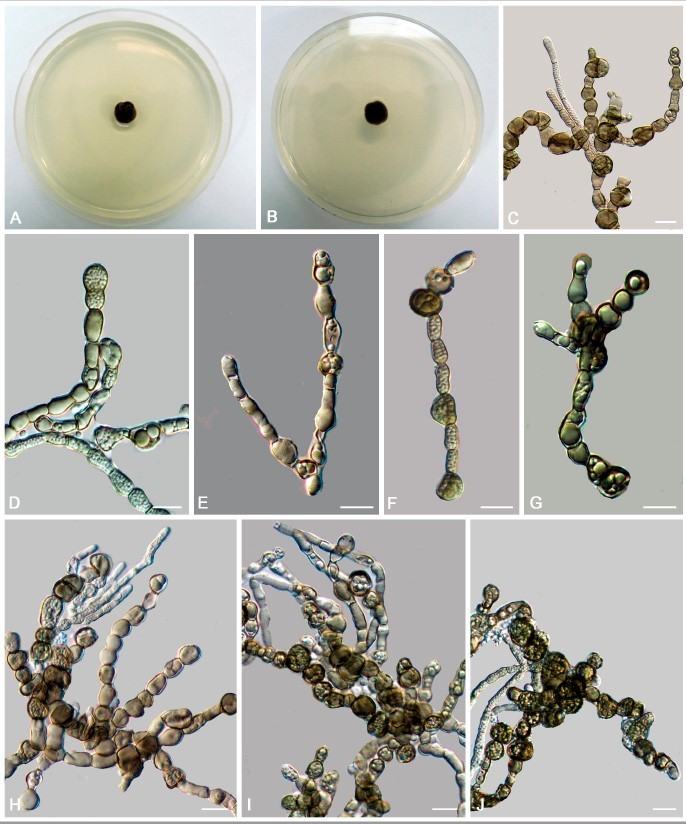
Knufia separata (CGMCC 3.17337). (A,B) Colony forward and reverse after 4 weeks on MEA. (C–E) Differentiated hyphae. (F,G) Swollen cell. (H–J) Dark pigmented multicellular bodies. Scale bars: (C–J) = 10 µm.


